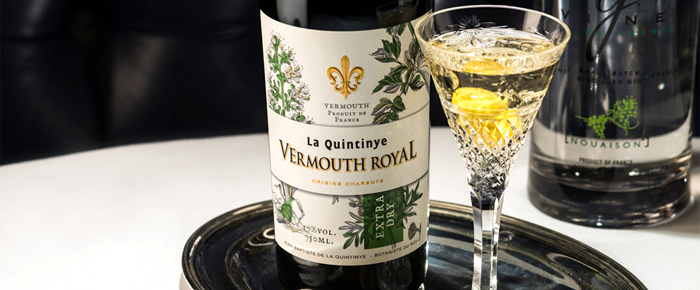
By Rick Riozza
It’s sure been the craze this past decade; flavored vodkas continue to mount the shelves with new and fancy essences from, seemingly, any organic substance and from the rarest outposts around.
But, let’s remember what was, probably, the first flavored vodka: Gin. Several hundred years ago, someone, most likely in Holland or Belgium, began to infuse alcohol with juniper berries and a variety of other botanicals. Gin is still made this way today, and each brand has its own recipe and techniques for infusion. While all gin has some juniper flavor, the other botanicals can include a wide array of herbs, vegetables, flowers, fruits, spices and even tea.
And gin—totally embraced by England—became ever-popular back then because any decent Brit would have his portion accompany him to the ever-expanding colonies around the globe, toting also some quinine, limes & lemons for good health. This combo engendered two of the most important cocktails on earth: the Gin & tonic and the Martini.
What do you think?—there’s nothing sexier than a martini. Its sleek appearance in a chilled glass reeks of class and allure. And you can’t contemplate Palm Springs without imagining the cocktail.
And by the way, that “three martini lunch” was a real thing back in the 60s and 70s, before there was a cop at every corner. In my legal practice days, and especially when I’d go out and lunch with judges in the Los Angeles area, they were all taking down three martinis—you’d see a lot of them sleeping on the bench in the late afternoon.
For “old school” people, it’s a traditional mix of gin, dry vermouth, and is dressed with a choice of olives, onions, or a lemon twist as garnish. Turn the lights down low and just take a sip.
I’ve never appreciated a vodka martini. Simply the super charging & fueling effects of the gin’s juniper essence is in a class of its own. Now I’m a big James Bond fan, but unlike so many Americans, I’ve never followed the 007 version, made with crystal-clean vodka.
The popularized ‘tinis’ cocktails, such as appletinis and flirtinis sound great when the girls are having fun at the bar, but the classic martini is a different subject.
Vermouth is a wine; it’s a fortified and aromatized wine, meaning it’s spiked with brandy and infused with herbs & spices, and sometimes sweetened, and, originally marketed for medicinal purposes before it became a celebrated aperitif. There are two main varieties: red (sweet) vermouth, which originally hails from Italy, and white (dry) vermouth, which first appeared in France. Wormwood, of absinthe fame, is dry vermouth’s hallmark ingredient
New on the scene is a French vermouth producer, La Quintinye Vermouth Royal, with their collection of three vermouths. This new vermouth takes its name from Jean-Baptiste de la Quintinye, botanist to King Louis XIV—the Sun King. La Quintinye, born in 1623 in France’s south-west region of Charente, went on to create the famous kitchen gardens at the Palace of Versailles.
La Quintinye, pronounced “Lah-kan-teen-ee,” comes from EuroWineGate, the same folks behind G’Vine gin and Ciroc vodka. Master distiller Sebastien Robicquet’s family has history in the Cognac region dating back hundreds of years.
La Quint also hails from the same terroir of Charentes, better known today as the home of cognac, and this is the first vermouth to be made with a base of Pineau des Charentes i.e., a pre-distilled cognac. This regional aperitif was born during the 16 century from an accidental mix of grape must and Cognac
La Quint is offering Rouge (Italian style), Bianco, and Extra Dry (French style). All share a base of 12 carefully selected plants and spices including artemisia (i.e. wormwood), vine flowers , angelica, iris roots, cardamom, cinnamon, cinchona (or quinine bark), bitter orange, ginger, licorice, nutmeg and quassia amara. Each variant is then completed with its own specific selection of botanicals: in total, 28 plants and spices compose Vermouth Royal Rouge, 18 make the Blanc variety and 27 are used in Vermouth Royal Extra Dry. A very French concoction!
Rouge –It has a nice spiciness, with cinnamon, clove, lavender, with a hint of ginger and “perfume-y,” in a pleasant way. The Rouge is a sweet vermouth, but far more complex than the usual Italian vermouth.
Surprisingly this wine, chilled up, went wonderfully with Chinese cuisine, particularly Schezuan-Hunan style as the wine balances out the spicy chili pepper and cuts some of the salty soy flavors in dishes like fried rice and Kung-Pao Chicken while the same saltiness cuts the sweetness of the vermouth: a perfect pairing.
Bianco – This was the least pungent and complex of the three. The botanical flavors are more subtle–think melon with a hint of herbs. It’s sweet, but less so than non-dry versions.
My favorite cocktail so far with the Bianco is a drink my son Paolo put together—he’s still working on the name. An absolutely tasty and refreshing libation of two parts Bianco, one part sparkling water, a generous squeeze of fresh lemon served on ice.
Extra Dry – This is a very pronounced wine in botanical circles; dry, but not too dry. The finish ends with a moderate, pleasing note of pine. When fashioning the “dry” classic martini, pour just a bit of the vermouth into the chilled martini glass, swirl, and then pour it all out, leaving the interior of the glass just lightly affected.
Cheers!












































